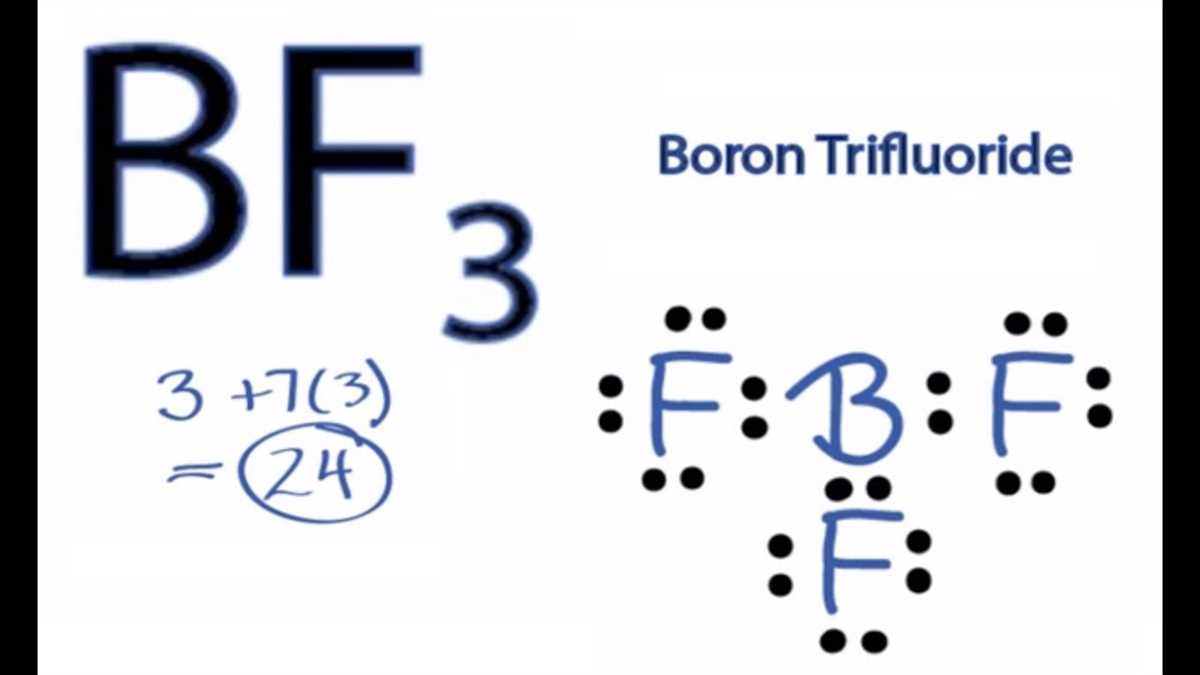
Boron is a chemical element with the symbol B and atomic number 5. It is a metalloid, meaning it has properties of both metals and non-metals. Boron is commonly found in compounds called borates and is an essential nutrient for all plants and many animals.
Lewis dot diagrams, also known as electron dot diagrams, are used to represent the valence electrons in an atom. Valence electrons are the electrons in the outermost energy level of an atom, and they are involved in chemical bonding. In a Lewis dot diagram, the symbol of an element is surrounded by dots, each representing one valence electron.
In the case of boron, which has an atomic number of 5, it has 5 electrons in total. The first two electrons fill the 1s orbital, and the next three electrons fill the 2s and 2p orbitals. The Lewis dot diagram for boron would therefore show three dots around the boron symbol, representing its three valence electrons.
The Lewis dot diagram for boron can be useful in understanding how boron atoms bond with other atoms to form compounds. By looking at the Lewis dot diagram, we can see that boron has three valence electrons available for bonding. This can help us determine the types and number of bonds boron can form, as well as the overall geometry of the compound.
Lewis Dot Diagram of Boron
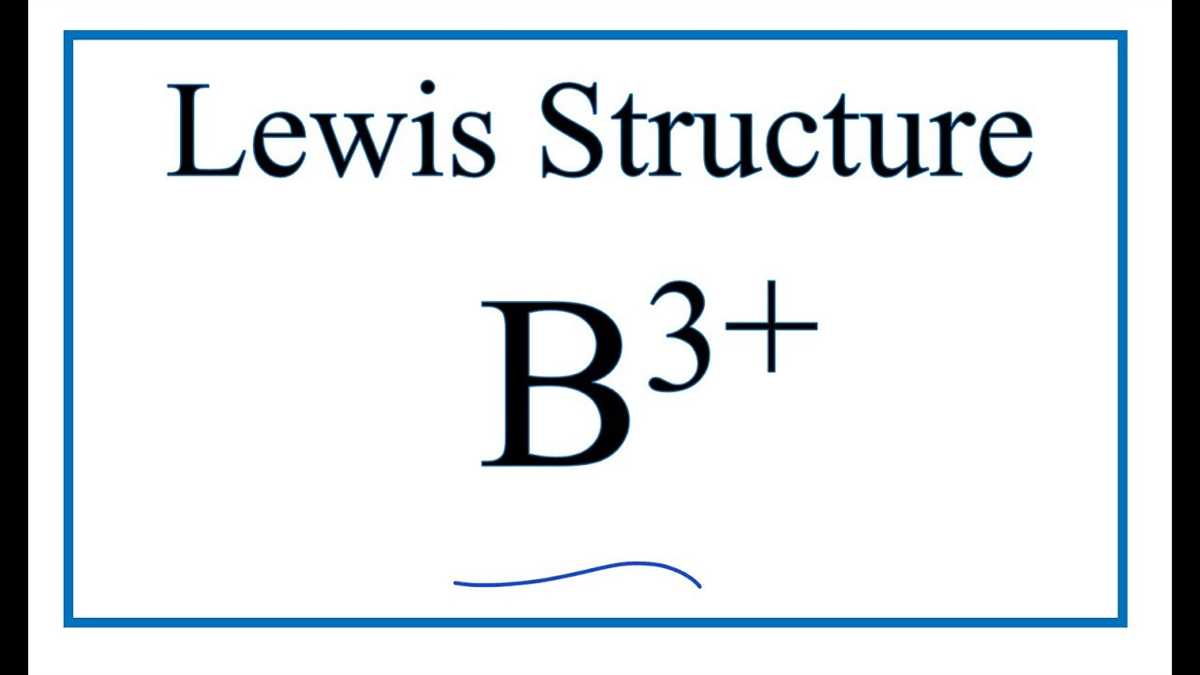
Boron is a chemical element with the symbol B and atomic number 5. It is classified as a metalloid and is a member of the group 13 elements in the periodic table. In its natural form, boron is a hard, brittle crystalline solid that is black in color. It is not found freely in nature but is primarily obtained from boron compounds.
When representing the Lewis dot diagram of boron, we use the symbol B to represent the nucleus of the atom. Around the nucleus, we can place a maximum of three valence electrons. Valence electrons are the outermost electrons of an atom and are involved in chemical bonding.
To visually represent the Lewis dot diagram of boron, we can arrange three dots around the symbol B. Each dot represents one valence electron. Since boron has three valence electrons, we place one dot on each side of the B symbol. This arrangement is a simplified representation of the outermost electron configuration of the boron atom.
This Lewis dot diagram of boron helps us understand the chemical behavior of boron in bonding with other atoms. Boron typically forms covalent bonds, meaning it shares electrons with other atoms. The arrangement of valence electrons in the Lewis dot diagram helps us determine how many bonds boron can form and with which elements it is likely to bond.
In summary, the Lewis dot diagram of boron consists of the symbol B surrounded by three dots, representing the three valence electrons of the atom. This representation helps us visualize the electron configuration and understand the chemical behavior of boron in bonding with other atoms.
What is a Lewis Dot Diagram?

A Lewis dot diagram is a representation of the valence electrons of an atom. It is named after the American chemist Gilbert N. Lewis, who first introduced this notation in 1916. The Lewis dot diagram uses a symbol for the element surrounded by dots, which represent the valence electrons. Valence electrons are the outermost electrons of an atom, and they play a crucial role in chemical bonding. By understanding the arrangement of valence electrons, we can predict the chemical behavior and bonding patterns of an element.
In a Lewis dot diagram, each dot represents one valence electron. The dots are placed around the symbol of the element, with no more than two dots per side (representing the s and p orbitals). The placement of the dots follows specific rules, depending on the electron configuration of the element. For example, elements in the first period of the periodic table, such as hydrogen and helium, have only one or two valence electrons and will have one or two dots, respectively. Elements in the second period typically have two to eight valence electrons and will have dots placed in the four sides of the symbol.
The Lewis dot diagram provides a visual representation of the electron distribution and allows us to determine the number of valence electrons an element has. This information is crucial in understanding the element’s chemical behavior, as valence electrons are involved in bonding with other atoms to form compounds. The Lewis dot diagram is a useful tool in chemistry education and is often used to teach students about the concept of valence electrons and chemical bonding.
Structure of Boron
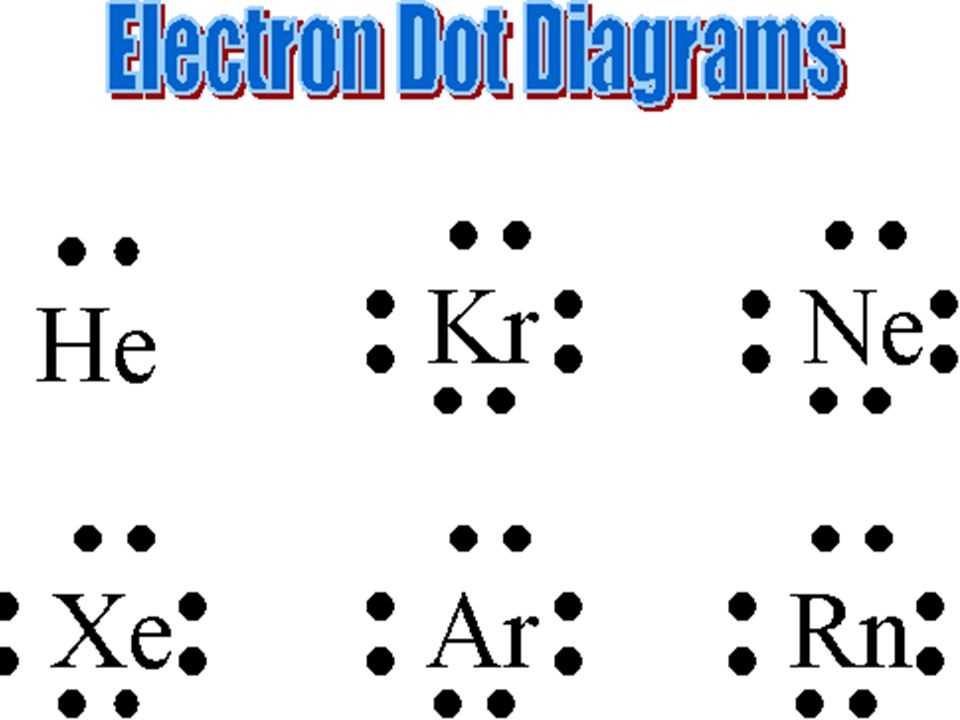
Boron is a chemical element with the symbol B and atomic number 5. It has a unique structure and is classified as a metalloid. The atomic structure of boron consists of five protons in the nucleus and five electrons orbiting the nucleus. The Lewis dot diagram of boron represents the arrangement of these electrons in the outermost shell.
Due to its unique electronic configuration, boron forms a trigonal planar structure. This means that the three valence electrons of boron are distributed evenly in the three sp2 hybrid orbitals. This arrangement gives boron its distinctive triangular shape.
The Lewis dot diagram of boron shows that two of the valence electrons form a single bond with two electrons from another atom, while the third valence electron remains unpaired. This unpaired electron makes boron a strong Lewis acid, as it readily accepts an electron pair from a Lewis base to form a coordinate covalent bond.
Boron is known for its low density and high melting point, which can be attributed to its unique structure and bonding. Its structure allows for the formation of strong covalent bonds, resulting in a solid and stable lattice. Additionally, boron exhibits various allotropes, meaning it can exist in different forms with distinct crystal structures.
In conclusion, the structure of boron is characterized by its trigonal planar arrangement of valence electrons, giving it a distinctive triangular shape. This unique structure and bonding properties contribute to the diverse properties and applications of boron compounds in various industries.
How to Draw a Lewis Dot Diagram for Boron?
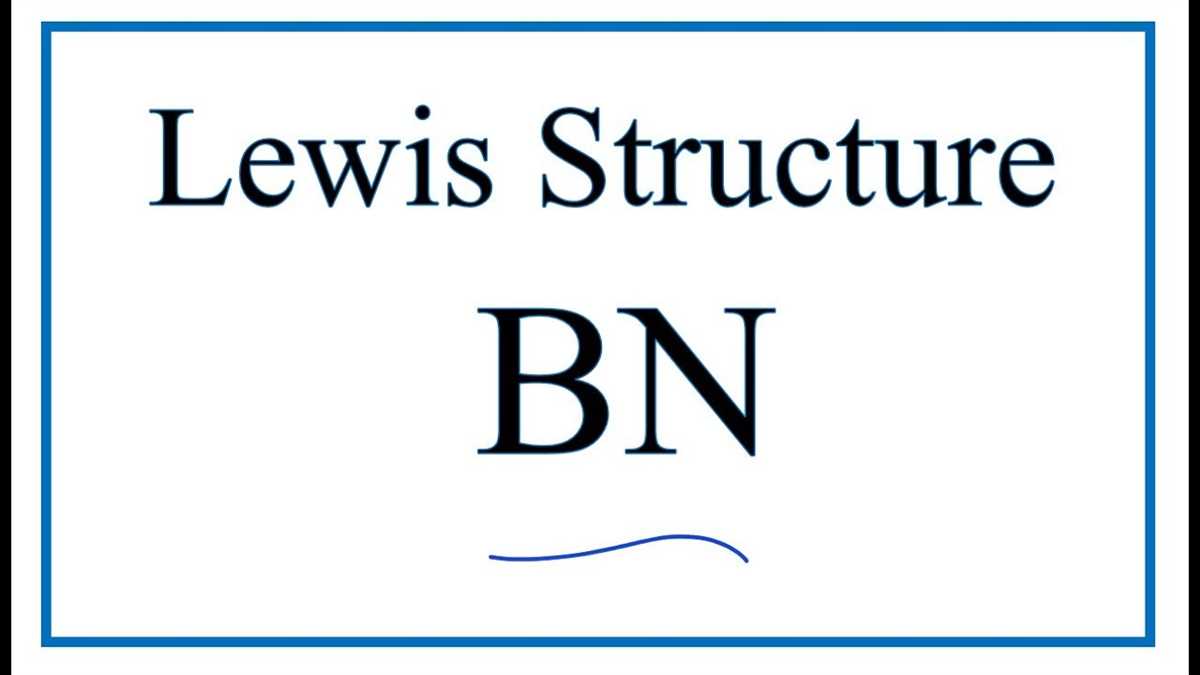
Boron is a chemical element with the symbol B and atomic number 5. It is classified as a metalloid and is found in various compounds, including borax and boron nitride. Drawing a Lewis dot diagram for boron involves depicting the valence electrons surrounding the boron atom.
In order to draw a Lewis dot diagram for boron, you need to determine the number of valence electrons it has. Boron belongs to Group 13 of the periodic table, which means it has three valence electrons. These electrons are located in the second energy level or outermost shell of the atom.
The Lewis structure for boron can be drawn by placing three dots around the symbol “B” to represent its three valence electrons. The dots are typically placed around the symbol in a triangular pattern, with each dot representing one valence electron of boron.
The Lewis dot diagram for boron can also be represented using lines to indicate the shared electrons in a covalent bond. Boron has a tendency to form three covalent bonds, so the Lewis structure can be drawn with three lines connecting the boron atom to other atoms.
To summarize, the Lewis dot diagram for boron consists of the boron symbol “B” with three dots arranged in a triangular pattern around it to represent its three valence electrons. Additionally, lines can be used to indicate the covalent bonds that boron forms with other atoms.
The Electron Configuration of Boron
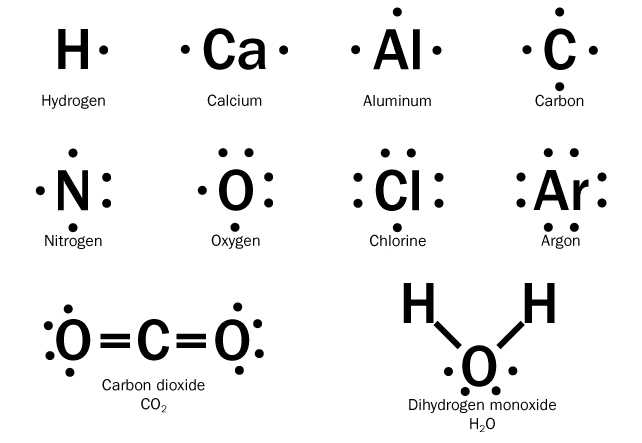
Boron is a chemical element with the atomic number 5 and the symbol B. It is a metalloid, meaning it has properties of both metals and non-metals. Boron has a unique electron configuration, which refers to the arrangement of its electrons in different energy levels or orbitals around the nucleus.
The electron configuration of boron can be represented using the noble gas notation, which involves referencing the nearest noble gas with a lower atomic number, in this case, helium (He). The electron configuration of boron is 1s2 2s2 2p1, indicating that it has two electrons in the first energy level, two electrons in the second energy level, and one electron in the third energy level.
To visualize the electron configuration of boron, a Lewis dot diagram can be used. In a Lewis dot diagram, the chemical symbol for the element is surrounded by dots representing its valence electrons, which are the electrons in the outermost energy level. For boron, there are three valence electrons, which are represented as three dots around the atomic symbol “B”. The dots are placed on different sides of the symbol to represent the different orbitals in which the electrons are found.
Understanding the electron configuration of boron is important in understanding its chemical reactions and bonding behavior. Boron tends to form covalent bonds, in which it shares electrons with other atoms, due to its low electronegativity. These bonds allow boron to form a variety of compounds, such as borates, borohydrides, and boranes, which have important applications in various industries.
Properties of Boron
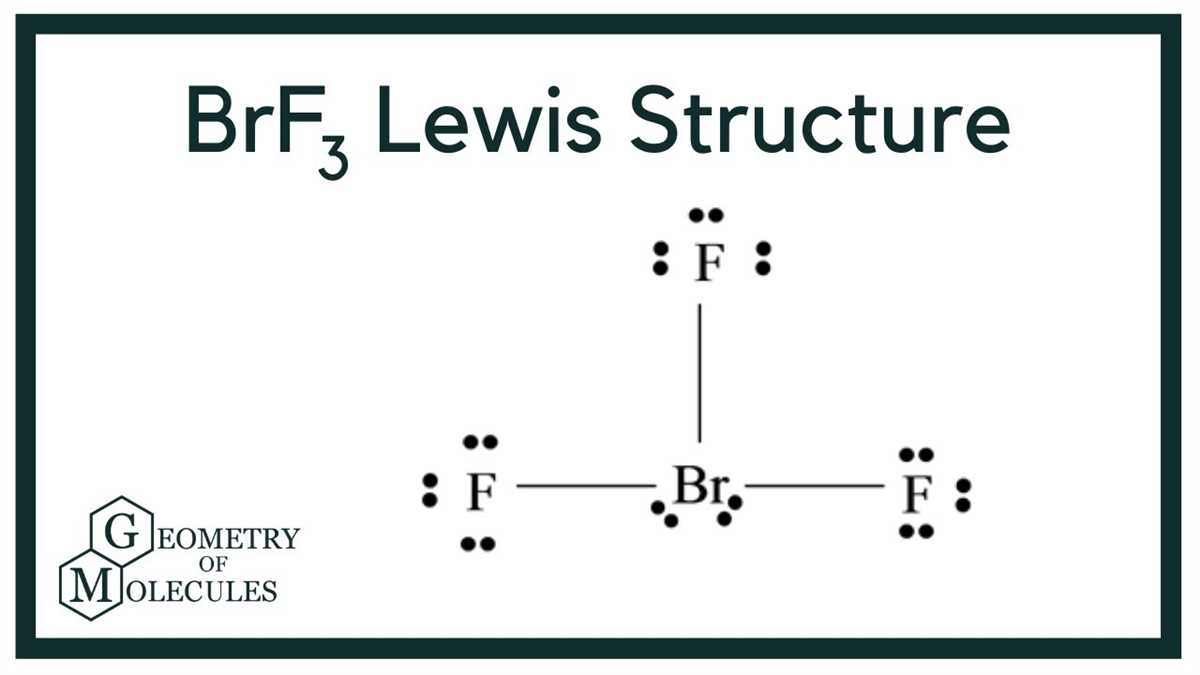
Boron is a chemical element with the symbol B and atomic number 5. It is a metalloid that can be found in various compounds in nature. Boron has interesting properties that make it useful in different applications.
1. Melting and boiling points: Boron has a high melting point of 2076°C and a boiling point of 3927°C. These high temperatures make it suitable for applications where high heat resistance is required.
2. Hardness: Boron is one of the hardest elements known, second only to diamonds. It has a hardness of 9.3 on the Mohs scale, making it useful in the production of hard materials, such as boron carbide, which is used in armor plates and cutting tools.
3. Electrical conductivity: Boron is a poor conductor of electricity in its pure form. However, it can act as a dopant in semiconductors, altering their electrical properties. Boron-doped silicon is commonly used in electronic devices, such as transistors and solar cells.
4. Chemical reactivity: Boron is chemically reactive, forming compounds with other elements. It can react with oxygen to form boron oxide, which has various industrial applications, including as a glass additive and as a flux for soldering. Boron also forms stable compounds with carbon, such as boron nitride, which has properties similar to graphite.
5. Lewis dot diagram: The Lewis dot diagram of boron consists of the Boron symbol “B” in the center, surrounded by three dots representing its three valence electrons.
In conclusion, boron has unique properties that make it valuable in different industries, ranging from electronics to materials science. Its high melting point, hardness, and chemical reactivity make it a versatile element with various applications.
Applications of Boron
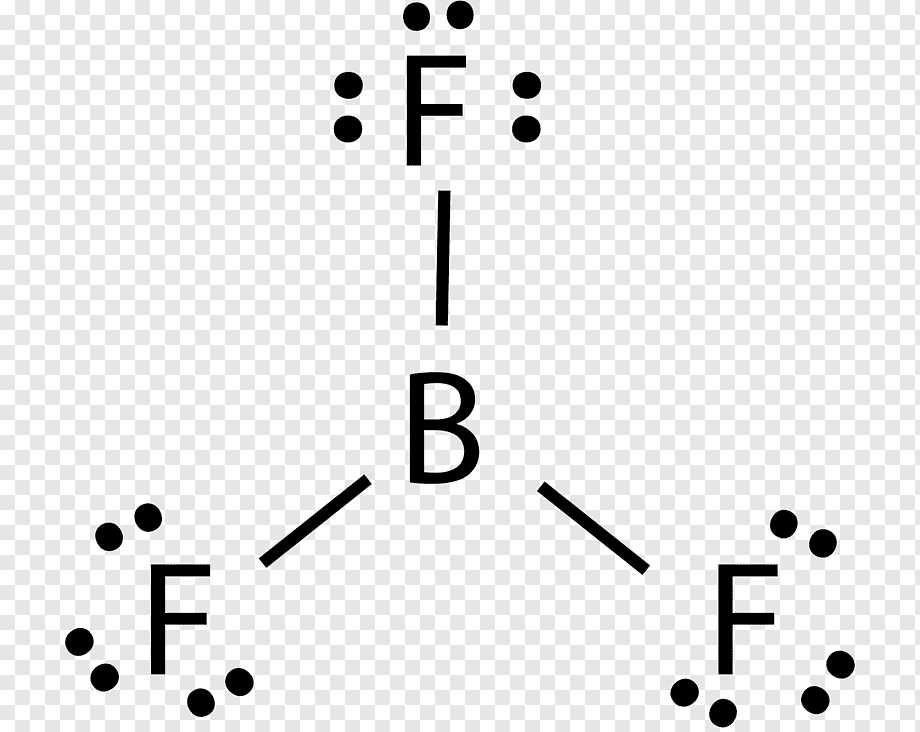
Boron, with its unique properties and versatile nature, finds its applications in various fields. Some of the notable applications of boron include:
- Refractory materials: Boron compounds, particularly boron nitride, are used in the production of refractory materials. These materials can withstand high temperatures without melting, making them ideal for use in furnaces, kilns, and other high-temperature applications.
- Nuclear industry: Boron-10, an isotope of boron, is used in the control rods of nuclear reactors. It has the ability to absorb neutrons, thereby regulating and controlling the nuclear reaction.
- Pharmaceuticals: Boron compounds have been studied for their potential applications in pharmaceuticals. They have shown promise in fields such as cancer treatment, Alzheimer’s disease, and as antiviral agents.
- Electronics: Boron is used in various electronic devices. It acts as a dopant in silicon to improve its electrical conductivity and has been used in the production of semiconductors and transistors.
- Agriculture: Boron is an essential nutrient for plant growth. It is used as a fertilizer to improve crop yields and enhance plant health.
- Flame retardants: Boron compounds, such as borates, are effective flame retardants. They are used in the production of fire-resistant materials, such as textiles, plastics, and foams.
Boron’s wide range of applications makes it an important element in various industries. Its unique properties and versatility continue to drive research and development in exploring new applications and improving existing ones.
Q&A:
What are some applications of boron?
Boron has many applications, including being used as a dopant in semiconductors, in the production of glass and ceramics, as a flame retardant, and as a neutron absorber in nuclear reactors.
How is boron used in semiconductors?
Boron is used as a dopant in semiconductors, where it is added in small amounts to modify the electrical properties of the material. It can increase the number of charge carriers, making the semiconductor more conductive.
What role does boron play in the production of glass and ceramics?
Boron is used in the production of glass and ceramics as a fluxing agent. It helps to lower the melting point of the materials and allows them to be formed into desired shapes more easily.
How does boron act as a flame retardant?
Boron compounds, such as borax and boric acid, can be used as flame retardants. They release water when heated, which helps cool down the fire and also produce a protective layer on the material, preventing further combustion.
Why is boron used as a neutron absorber in nuclear reactors?
Boron-10 is a good absorber of neutrons, and it is used in the form of boron carbide or borosilicate glass in nuclear reactors. By absorbing the neutrons, it helps control the rate of the nuclear reactions and prevents overheating.
What are the applications of Boron?
Boron has various applications in different fields. It is used in the production of borosilicate glasses, which have high resistance to thermal shock and are commonly used in laboratory equipment and cookware. Boron is also used in the manufacturing of boron fibers, which are lightweight and exhibit high strength and stiffness. In the field of medicine, boron neutron capture therapy (BNCT) is a promising treatment for certain types of cancer. Additionally, boron compounds are used as additives in fertilizers to enhance plant growth and yield.